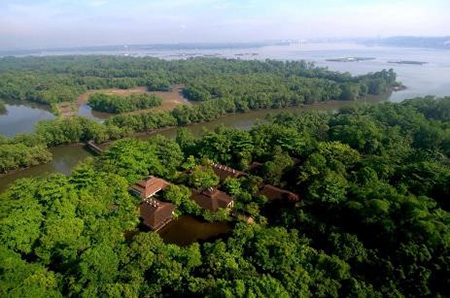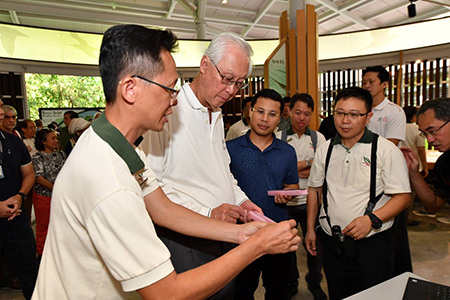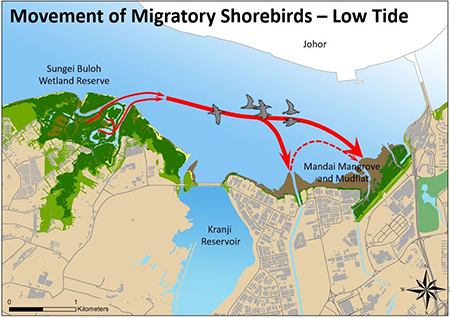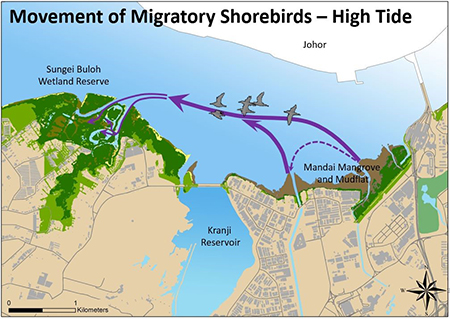From a mangrove swamp in the 1800s to its opening as a nature park on 6 December 1993, Sungei Buloh Wetland Reserve has come a long way. The Reserve is recognised internationally as an important site for migratory shorebirds along the East Asian – Australasian Flyway (EAAF) that stretches from the Arctic through Russia and Alaska to Australia and New Zealand, covering 22 countries.

Last year, Sungei Buloh Wetland Reserve celebrated its 25th anniversary. In conjunction with World Migratory Bird Day (13 October) and the Reserve’s 25th anniversary, the National Parks Board (NParks) announced on 7 October 2018 that Mandai Mangrove and Mudflat will also be conserved as a Nature Park. Emeritus Senior Minister Mr Goh Chok Tong was the Guest-of-Honour at the anniversary event. He was hosted by Minister for Social and Family Development and Second Minister for National Development Mr Desmond Lee.

Ecological significance of the Mandai Mangrove and Mudflat
Situated about 3km east of the Reserve, the new 72.8-hectare Nature Park is one of the richest wetlands in Singapore. The Mandai Mangrove is one of the few remaining mangrove habitats in Singapore with an extensive mudflat exposed at low tide. It is home to 29 mangrove plant species, 16 of which are threatened, as well as threatened species of seagrass and horseshoe crabs.
NParks’ studies have shown that, due to the diversity and abundance of animals that live on the bottom of the sea floor, i.e., benthic animals such as molluscs, crustaceans, and worms, the mudflat at Mandai Mangrove provides migratory shorebirds with a rich feeding ground. Results from surveys and radio-tracking of flagged shorebirds in recent years confirmed that a majority of them roosting in the Wetland Reserve at high tide will fly to forage at the extensive mudflat exposed during low tide. As such, these ecologically interconnected habitats provide important feeding and roosting (resting) sites for migratory shorebirds using the EAAF.
Shorebird species that can be observed feeding at Mandai Mangrove include the Whimbrel (Numenius phaeopus), Common Greenshank (Tringa nebularia) and Common Redshank (Tringa totanus).


Research and educational opportunities
Minister Lee shared that the new Nature Park will enhance the capacity of the main Reserve as an outdoor education, learning, and research centre, with new opportunities for visitors to learn more about wetland ecology and to be involved with its conservation.
The new Nature Park is also strategically situated along two major future recreational routes: the Round-Island-Route (RIR) and the Rail Corridor. It will be part of the section of the RIR designated to be an eco-discovery corridor, which will highlight lesser-known ecological gems in Singapore.
At the same time, to minimise impact on the mudflat, NParks will provide a low level of visitor amenities. These will include bicycle racks, a single nature trail, and bird hides that will allow visitors to enjoy panoramic views of the migratory birds feeding on the expansive mudflat without disturbing them. The Nature Park is slated to open in mid-2022.
If you’re curious about the feathery visitors who stop by Singapore, visit Sungei Buloh Wetland Reserve during the migration season between September and March to catch a glimpse of them!







